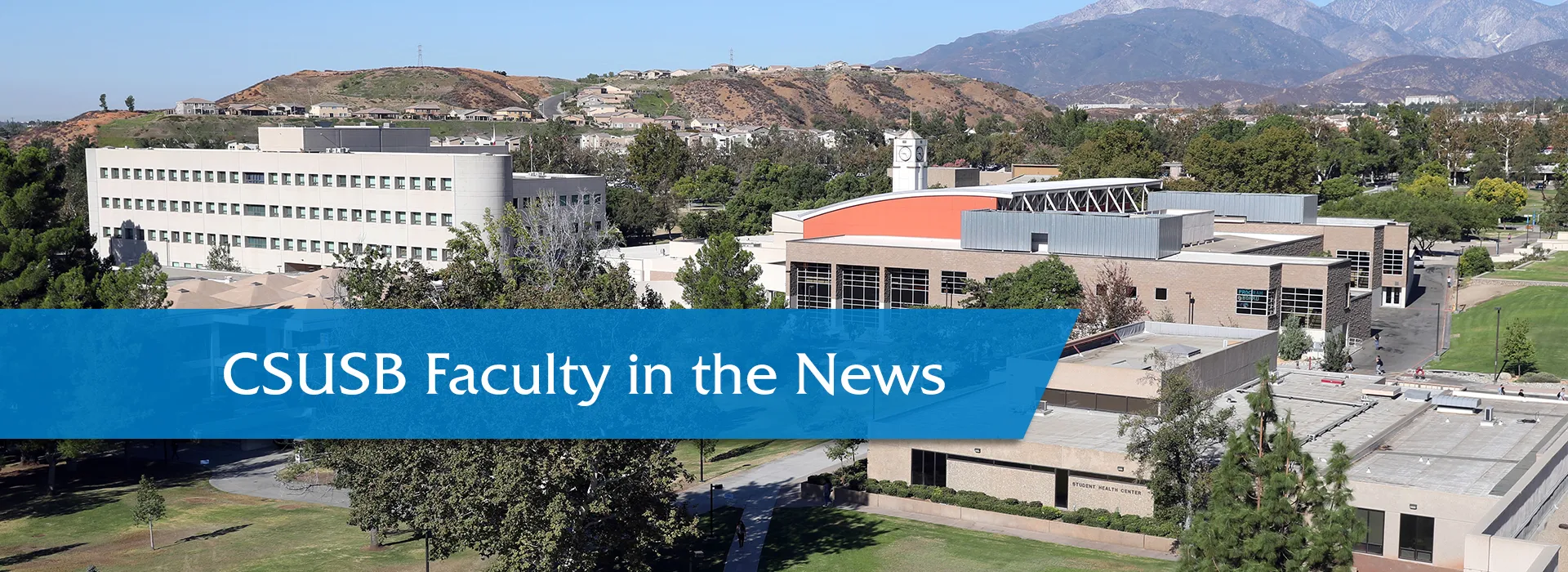
NOTE: Faculty, if you are interviewed and quoted by news media, or if your work has been cited, and you have an online link to the article or video, please let us know. Contact us at news@csusb.edu.
CSUSB professor discusses the chemistry in relationshipsMyDomaineJune 7, 2018
There are few better feelings in the world than experiencing that newfound chemistry with someone you care about. In the early stages of a relationship, even the smallest touch or quickest eye contact is enough to send shockwaves through your body. This is what we like to call chemistry between two people, or 'the spark'—a twinkle in the eye, a skipped heartbeat, or flushed cheeks that indicate you are, indeed catching feels.
But is there a scientific explanation for what we call chemistry between two people? According to Kelly Campbell, Ph.D., an associate professor of psychology and human development at California State University, San Bernardino, 'People with open, agreeable, and conscientious personalities are more likely to experience chemistry.' According to her extensive research, the main qualities of chemistry include reciprocal candor, mutual interest, personableness, similarity, and physical attraction. 'The more these characteristics are present, the more likely individuals are to perceive of chemistry in the interaction.'
Read the complete article at “Plot twist: Chemistry between 2 people depends on these 3 personality traits.”
CSUSB professor’s review of book on meditation cited by its authorMeditate.comJune 2018
John Winslade, professor of special education, rehabilitation and counseling at CSUSB, was one of the reviewers of “The Mediation Handbook: Theory, Research and Practice.” He wrote: 'Mediation has burst its banks and spilled over into many fields. It is no longer a meandering stream or a quiet backwater. It has left behind romantic beginnings and entered many new waterways. Read this book and be carried along in the surge.'
Read the complete article at “Review of meditation handbook.”
CSUSB professor offers financial advice on credit card balance transfersWalletHubJune 2018
The consumer finance website enlisted James Estes, CSUSB professor of finance, for tips on how consumers can find the best credit cards when it comes to transferring the balance from one to another for lower rates.
The website posed four questions:
- What’s the best way to find the best balance transfer credit card?
- Why do you need good or excellent credit to get the best balance transfer credit cards?
- What’s the biggest mistake people make with balance transfers?
- Why aren’t there more 0% balance transfer credit cards with $0 transfer fees?
Estes reply:
“The answer to your first question is easy: google it.
“Once you have done that, simply compare APR (annual percent rate) for the cheapest rate on a card. Another and simpler method is to compare rankings on three or four sites.
“Good credit will make some difference but by the nature of the card a customer is usually moving to either avoid having to pay interest or is over their head in interest. This is probably the reason that there is not an abundance of cards, most people using them don't have great credit so with the rising default rate on credit card debt, and they are not a great prospect for credit card providers.
“The biggest mistake is, I think, not understanding that using this vehicle will adversely impact one's credit score. The use multiple times will simply multiply that impact.”
Read the complete article at “Ask the experts: Best way to walk the balance transfer tightrope.”
These news clips and others may be found at “In the Headlines” on the Inside CSUSB website.